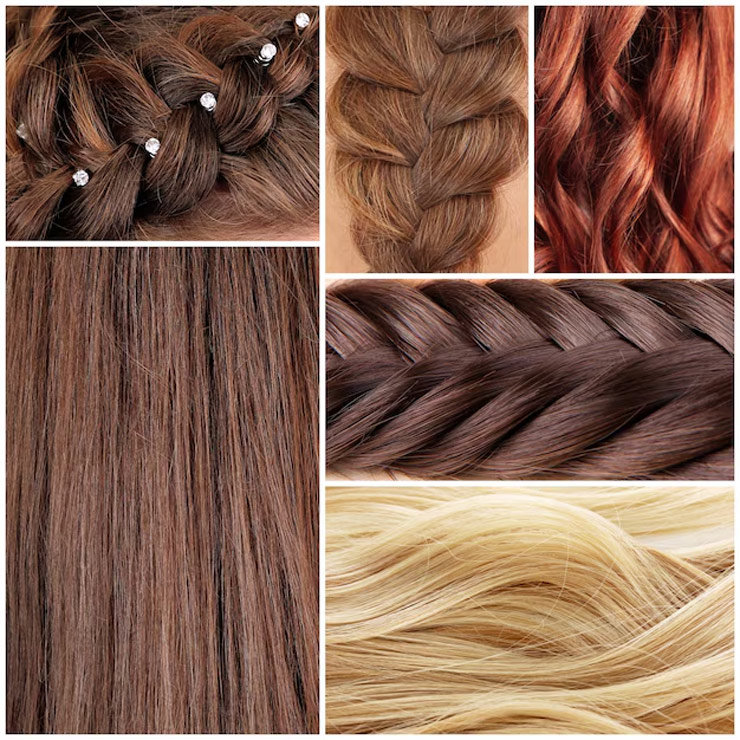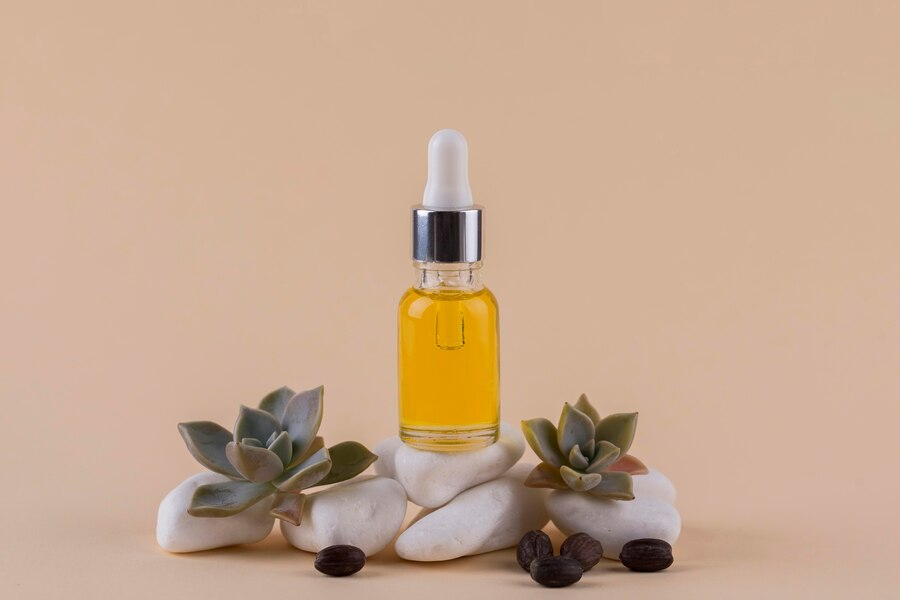
People often get confused while selecting the right hair oil with so many options available in the market. With choices like coconut, argan, and almond oil, it can be tough to know which will work best for your hair. However, finding the right oil is key to achieving healthier and more vibrant hair. To simplify the process, here's a guide to help you pick the perfect oil for your specific hair type and get the results you’ve been hoping for.
Table of Content:-
1. Identifying Your Hair Type
Before selecting an oil, it’s important to understand your hair type. Different hair textures and concerns require different oils to address their specific needs.

- Fine Hair: Fine hair tends to be lightweight and can get greasy easily, so lighter oils are ideal.
- Thick Hair: Thick hair requires a more nourishing, heavier oil that can penetrate deeply.
- Curly Hair: Curls tend to be drier, so oils that provide moisture and reduce frizz are essential.
- Oily Hair: If you have naturally oily hair, you’ll want an oil that can balance the scalp without making it feel greasy.
- Dry Hair: Dry hair benefits from oils rich in hydration and nutrients.
- Colour-Treated Hair: Colour-treated hair needs oils that help repair the damage without stripping the colour.
2. Consider Your Hair Concerns
Are you looking to boost hair growth, add moisture, or reduce dandruff? The right oil can address these concerns effectively.

- Hair Growth: Castor oil and peppermint oil are known for stimulating hair growth.
- Moisturising: Coconut and avocado oils deeply nourish and hydrate the hair.
- Dandruff: Tea tree and neem oil have antifungal properties that can help reduce dandruff.
- Split Ends: Argan oil and olive oil are great for mending split ends and sealing moisture into hair strands.
- Frizz Control: Jojoba and almond oil can smooth frizz and keep hair manageable.
Also Read: Experiencing Hair Loss? Expert Lists Diagnostic Tests And Their Importance
3. Pick the Right Oil for Your Hair Type
Fine Hair: Jojoba or Grapeseed Oil

Fine hair can quickly feel weighed down by heavy oils. Jojoba oil and grapeseed oil are lightweight, non-greasy options that will add moisture without flattening your strands. Both oils are excellent for balancing the scalp’s natural oil production, making them ideal for people with oily scalps but dry ends.
According to a 2021 study, adding jojoba oil to thioglycolate-based straightening emulsions provided benefits to the hair fibre, helping to minimise protein loss, protect the hair strands, and enhance resistance to breakage.
Thick Hair: Coconut or Olive Oil
Thick hair often requires richer oils like coconut oil or olive oil. These oils penetrate deeply into the hair shaft, providing intense hydration and softness. Coconut oil is beneficial for preventing protein loss and strengthening hair, while olive oil adds shine and smoothness. A 2020 study found that applying coconut oil to hair once or twice a week can help reduce damage, such as breakage.
Curly Hair: Argan or Avocado Oil

Curly hair is often prone to dryness and frizz, so oils that provide extra moisture are essential. Argan oil is known as ‘liquid gold’ for its ability to tame frizz, hydrate dry curls, and add shine without weighing the hair down. Avocado oil is another excellent choice, as it deeply nourishes and protects hair from environmental damage.
Also Read: Baobab Oil For Curly Hair: 6 Reasons Why You Should Use It For Your Hair
Oily Hair: Tea Tree or Peppermint Oil
If you have oily hair, it’s important to pick oils that help balance scalp oil production rather than exacerbate the problem. Tea tree oil has antimicrobial properties that cleanse the scalp and reduce dandruff. On the other hand, peppermint oil provides a refreshing sensation that can help to balance oily hair without making it feel greasy.
Dry Hair: Almond or Avocado Oil
You should opt for oils rich in vitamins and fatty acids for dry hair. Almond oil is excellent for nourishing the scalp and hair, thanks to its vitamin E and magnesium content. Avocado oil, abundant in monounsaturated fats, penetrates deeply into the hair shaft, providing hydration and smoothing out dry, brittle strands.
Colour-Treated Hair: Argan or Macadamia Oil
Colour-treated hair needs extra care and argan oil is one of the best oils for protecting and moisturising dyed hair. Argan oil repairs damage and adds shine without stripping colour. Macadamia oil is also great for restoring vibrancy and moisture to colour-treated locks.
4. How to Apply Hair Oils Effectively
Now that you’ve chosen the right oil for your hair type, how you apply it is just as important as the oil itself.
- Pre-Wash Treatment: Applying oil to your hair before shampooing helps prevent moisture loss and adds an extra layer of protection.
- Post-Wash Treatment: For added shine and frizz control, a small amount of oil can be applied to damp hair after washing.
- Scalp Massage: Massaging oil into the scalp promotes blood circulation, which can stimulate hair growth and nourish hair roots.
- Hot Oil Treatment: Warming up the oil slightly and applying it as a treatment for 20-30 minutes before washing your hair provides deep conditioning.
[Disclaimer: This article contains information for informational purposes only, hence, we advise you to consult your own professional if you are dealing with any health issues to avoid complications.]
Also watch this video
Read Next
Here’s How You Can Make Grandma-style Amla, Reetha And Shikakai Shampoo At Home, Know Its Benefits
How we keep this article up to date:
We work with experts and keep a close eye on the latest in health and wellness. Whenever there is a new research or helpful information, we update our articles with accurate and useful advice.
Current Version